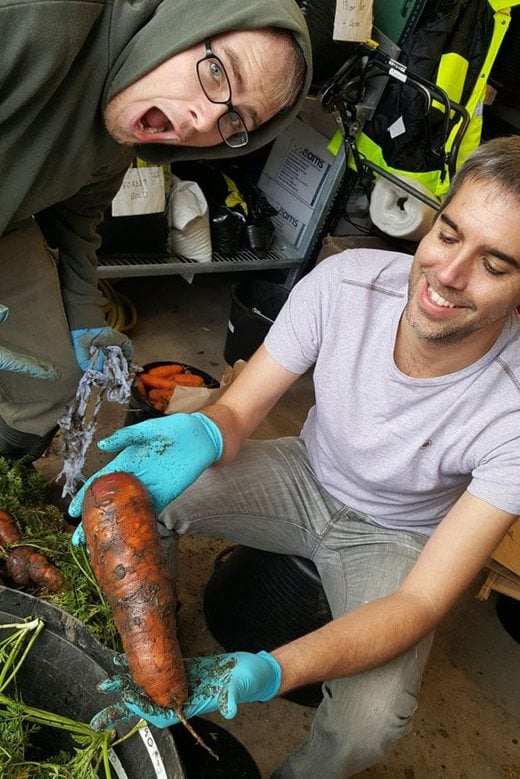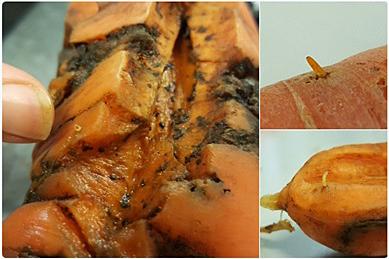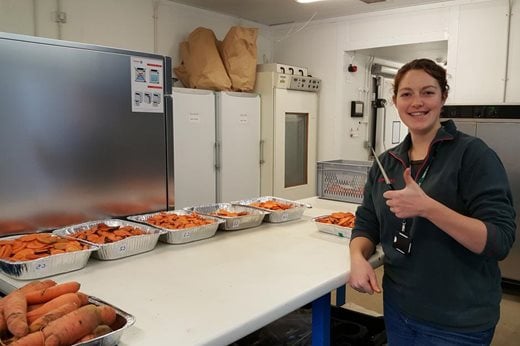Act 2 - the continued experiment trialling different methods of combating the pesky carrot fly

Fast forward several months (and many hours of weeding) later and the first carrot sowing was ready for harvest in July. It was the hottest week of the year and it is fair to say that we earned our ice creams!
The weather for the second harvest, during the last week of November, could not have been more different, torrential rain and frozen fingers. Despite the adverse conditions almost 2,000 carrots needed to be pulled out of the cold and muddy ground, to have their foliage chopped off and to be washed, dried and weighed.
Each carrot was then individually assessed for damage caused by carrot fly larvae. We even managed to grow several rather impressive carrot specimens, one, known affectionately as ‘Carrot B5’ was almost 800g (28oz)!
We have yet to analyse the data, but it’s already clear that the damage levels in November were much higher than those found in July. It was also quite satisfying to catch some of the culprits ‘red-handed’!
 A selection of carrots were then taken from each plot. These carrots were re-weighed and sliced into small pieces so we could dry them in the ovens to measure their dry weight.
A selection of carrots were then taken from each plot. These carrots were re-weighed and sliced into small pieces so we could dry them in the ovens to measure their dry weight.
This is important so that we can compare the yield of each plot fairly without different levels of water in the carrots affecting the weight. I wish we could also have put a few trays in to roast with some seasoning and oil!
The crunch
So which barriers are best? Do you really need to cover your plots completely to prevent them becoming a feast for the carrot root fly? Well, stay tuned, we hope to be able to answer these questions in time for April carrot sowers.
 Useful links
Useful links

